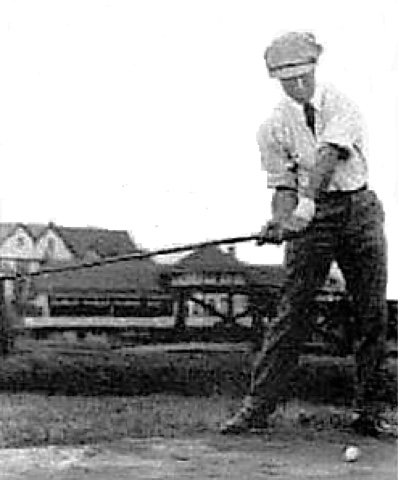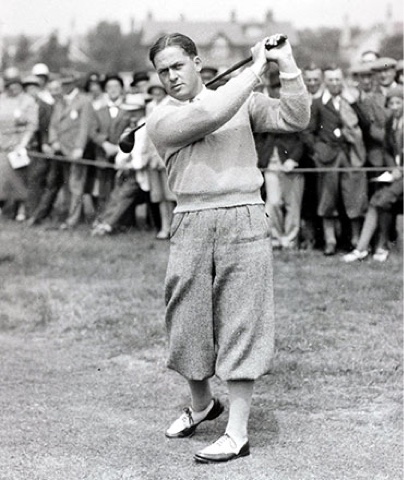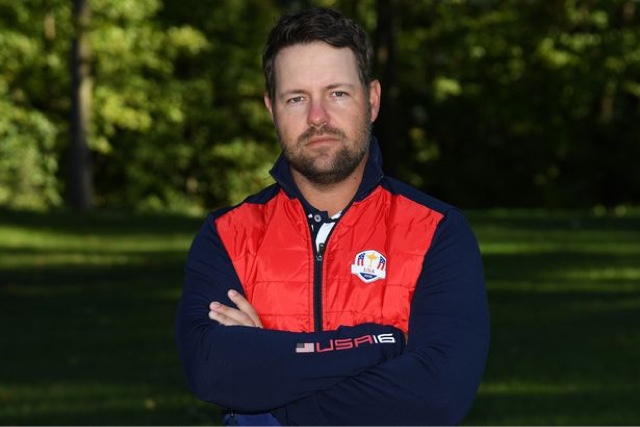Bobby Jones came to believe in predestination or fate. He understood that in order to win big championships you had to be good; but you also needed some luck. Most golfers who have competed understand this to be true.
In order to become a champion, you don't simply need luck on the golf course, you need some luck to get to the point where you are good enough to compete with the best players of your day. You need opportunity to play and practise. You need to play against other good players. And you need good role models, mentors, and/or instructors.
As I write this, I think of Ben Hogan who, perhaps as much as any great champion, dug it out of the dirt himself. But even Ben had Byron Nelson to compete against from the time the two of them met as caddies in Texas. Without Byron, who knows how good Ben would have been.
As for Bobby Jones, the luckiest thing that ever happened to him in golf was the arrival of Stewart Maiden at East Lake from Carnoustie to replace his brother Jimmy as the professional at East Lake. In his book, Down the Fairway, Bobby wrote:
"I wish I could say that a strange thrill shot through my skinny little bosom when I swung at a golf ball for the first time; but it wouldn't be truthful. I do not remember the first time I hit a golf ball, or hit at one; and as I recall it the game did not make much of an impression on me, except that I used to get mad enough to dance in the road when a wild shot went under a little bridge covered with briers across the ditch which was the second hole. I liked baseball much better, and played golf, or what we called golf, be ause of a dearth of boys in the neighbourhood with whom to play baseball...
We moved back to East Lake the next summer, in 1908, and here I ought to be able to record another sensation, because soon afterward Stewart Maiden came to be professional at the club, and that was the luckiest thing that ever happened to me in golf, which is saying a lot, because my entire career, if it may be called a career, has been lucky. There were times, during what one writer called my seven lean years, when I fancied most of the luck was bad luck; but I was wrong. Some people can learn only by having education drubbed into them; and I want to say right now that I never learned anything from a match that I won. Not jntil the seven lean years were over, at any rate... But the best luck I ever had in golf was when Stewart Maiden came from Carnoustie, Scotland, to be professional at the East Lake club... there was nothing sensational about Stewart. He said very little and I couldn't understand a single word of what he said; he was not long over from Scotland...
No-- there wasn't any sensation, any more than when I swung the first time at a golf ball. Stewart was just another little Scot, like Jimmy, only Scotcher. But it wasn't long before I was following him about the East Lake course and watching him... When I followed Stewart, I didn't carry even one club. I just watched him. I never was conscious of studying his play, or trying to play like him. I liked golf pretty well; he was the best player at the club; and I liked watching him perform. He paid little or no attention to me, and after tagging along four or five holes I would leave the match and go back to our house -- we had moved into a cottage inside the club property, right by the thirteenth green of the old course--and get a cap full of balls and my mashie and putter and go out to the thirteenth green and pitch them all on and putt them all out, over and over again. It was pretty good practice, I suppose. I liked to pitch the ball, and as I recall I could get it close to the pin with a fair consistency... Lately I have caught myself thinking about those long, sunny afternoons, pitching balls at the pin on the old thirteenth green, and I've wished I could get the ball up there as accurately now, from proportionate distances. The short pitch is the weakest spot in my game, these last few years. Maybe I've got away from Stewart Maiden's method that was so clearly before me in thise days when I had so little else to think about...
Now, I suppose all the time I was watching Stewart play golf the imitative faculty which seems inherent in most children was at work, and that I began hitting the ball as he did, so far as my limitations would permit. Dad says I was a natural mimic in those days, and I remember he used to amuse a veranda full of people at times by inspiring me to get out on the lawn and imitate the swing of this player or that one-- usually someone in the gathering."
Bobby Jones didn't have some sort of mystical experience when he first hit a golf ball; but he was lucky enough to have Stewart Maiden to watch and imitate, and a green by his house to hone his short game skills.
So, when you think of Bobby Jones, don't forget Stewart Maiden. Without that quiet little Scotsman, Bobby might never have become one of golf's greatest champions.












